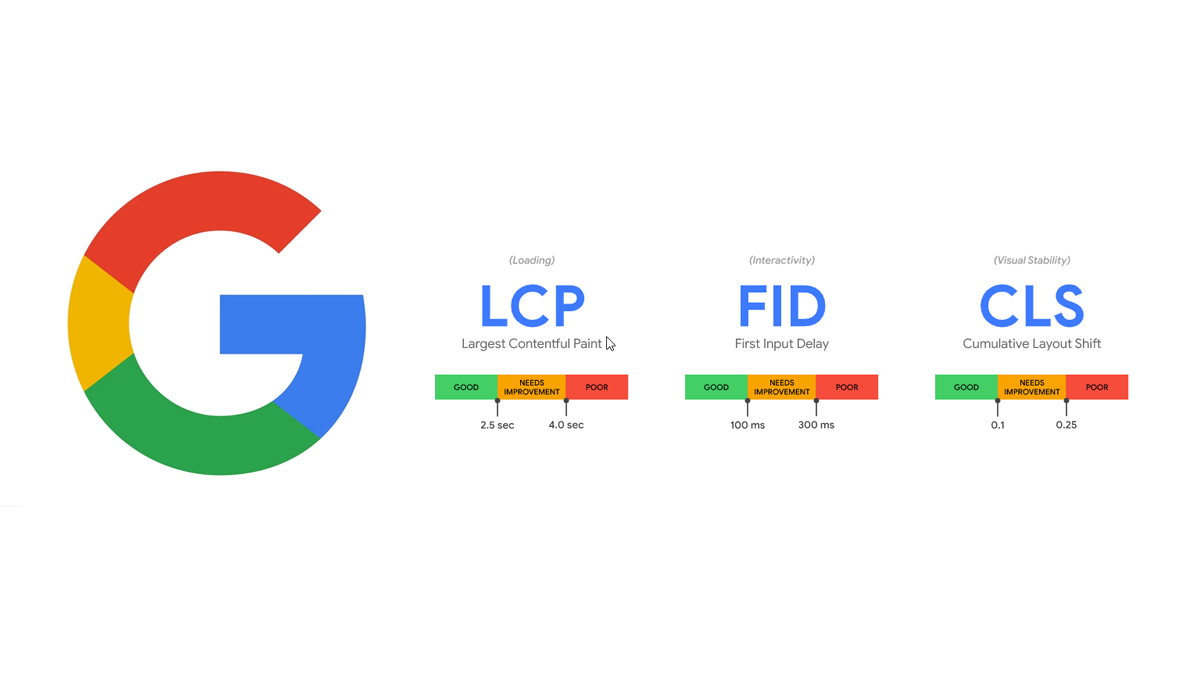Why Website Speed and Core Web Vitals Matter More Than Ever in 2025
→ Plus: The Tools You Actually Need to Fix Them
Remember the last time you clicked on a website that took just a second too long to load? You probably didn’t wait. You hit back, picked another result—and forgot that slow site ever existed.
That behaviour isn’t unique to you. In 2025, Google’s AI-powered search results (SGE) are leaning harder than ever on real user experience. And that means slow, clunky websites are quietly disappearing from visibility.
Website speed and Core Web Vitals aren’t just about technical polish anymore. They directly affect SEO, conversions, and whether you even appear in AI summaries or not.
Does Google Still Prioritize Speed in 2025?
Yes—and it’s no longer subtle.
Google’s ranking system still includes Page Experience signals, and Core Web Vitals are front and center. These include:
Largest Contentful Paint (LCP): How fast your primary content loads
Interaction to Next Paint (INP): How responsive your site feels after a user taps or clicks
Cumulative Layout Shift (CLS): How stable the visual layout is as it loads
According to updated data on web.dev, pages that meet Core Web Vitals thresholds not only rank better—they tend to have lower bounce rates, longer time-on-site, and higher conversion rates. That’s not theory. That’s what’s happening at scale.
So if your site still lags, shifts, or stutters—both Google and your users are noticing. And they’re not being patient.
Why Is Speed Even More Critical in 2025?
Because how people search, and how Google presents results, has fundamentally changed.
AI-Powered Search Summaries (SGE): These instant overviews favour fast-loading, crawlable content. If your site’s a pain to load, you’re less likely to be included.
Mobile Now Dominates: Around 70% of users globally are on mobile. A two-second delay might as well be a locked door.
User Behaviour Impacts Rankings: Google sees high bounce rates and low engagement as a quality issue. Speed is the first impression—fail that, and content quality doesn’t get a chance.
Revenue Is On The Line: Amazon once calculated that every extra second of load time cost them $1.6 billion a year. Scale that down to your business, and the impact is still felt—especially if you're relying on organic traffic or paid campaigns.
As Dan Monheit might put it: Loss aversion kicks in before logic does. People won’t wait for your value if their brain tells them “this is broken.”
What Tools Can I Use to Test Website Speed and Core Web Vitals?
Here are the five tools worth your time—whether you’re a solo founder or working with an SEO agency.
1. Google PageSpeed Insights
The most direct way to get Google’s view on your site’s performance. It measures all Core Web Vitals and shows live Chrome User Experience data.
👉 Run your site through it here
2. Lighthouse (via Chrome DevTools)
Great for developers or those working with them. Offers detailed performance audits, including JavaScript bottlenecks and accessibility issues.
3. GTmetrix
Provides simple scores and visual waterfall breakdowns. Great for spotting which scripts, images, or third-party requests are dragging you down.
4. WebPageTest
One of the most powerful tools out there. Test from multiple devices, browsers, and geos. Handy if your audience is regional or international.
5. Semrush or Ahrefs Site Audits
These paid platforms provide technical SEO + speed insights in one place. Ideal for marketers who need a broader view of site health without switching tools.
What’s Actually Slowing Your Site Down?
The biggest speed killers in 2025 aren’t new—they’re just more visible.
Oversized Images: PNGs and uncompressed JPEGs still lurk like dinosaurs. Switch to WebP or AVIF where possible.
Slow Hosting: Budget hosting might’ve worked in 2015. But today, it’s a speed liability. Look for providers optimized for Core Web Vitals and support CDNs (like Cloudflare or Bunny.net).
Third-Party Scripts: Ad trackers, widgets, and poorly coded plugins pile up. Audit them ruthlessly. If it doesn’t earn or convert—it goes.
No Lazy Loading: Your homepage shouldn’t load every single image on first click. Lazy loading fixes that.
Lack of Caching: Re-downloading static content every visit? You’re wasting bandwidth.
Bloated Code: Trim unused CSS and minify where possible. Leaner code = faster execution.
These changes aren’t just technical chores. They’re behavioural triggers. The friction you remove can be the nudge a customer needs to stay, engage, and convert.
Do Core Web Vitals Guarantee Top Rankings?
Not by themselves.
Think of them as tie-breakers. When two pages offer similar content and authority, the one that loads faster and offers smoother interactivity usually wins.
But here's the kicker: Core Web Vitals also improve user behaviour. They reduce bounce rate, increase time on page, and improve engagement—all of which send stronger signals back to Google.
As Search Engine Journal explains, Core Web Vitals don’t need to be perfect. But if they’re poor, they can drag down even great content.
Final Thought
In a landscape where AI summaries dominate and user patience runs razor-thin, website speed and Core Web Vitals are no longer optional—they’re survival essentials.
It’s not about chasing perfect scores. It’s about giving users—and Google—no reason to doubt your quality, right from the first second.
If you’re unsure how your site stacks up, this simple breakdown of performance fixes explains it well.
And if you're looking for how these principles connect with broader SEO insights, there's value in tying technical and content strategies together—not treating them as silos.
Because in 2025, the difference between being found and being forgotten… is often just a second.
FAQs
-
Yes. They remain part of the Page Experience signal set, though they’re not the most important factor. But if your site underperforms here, it can absolutely hold you back.
-
LCP (load time) often correlates strongest with bounce rate. But all three—LCP, INP, and CLS—work together to define usability.
-
Yes. Multiple studies (Google, Deloitte, SOASTA) show even 0.1s speed improvements can boost conversions significantly.
-
Monthly is a good rule. Also test after any major design, plugin, or content changes.
Anthony Yang
Hi, I’m Anthony, the founder of Elescend Marketing. Over the past three years, I’ve worked with more than 50 small businesses across North America.
Today, I lead a highly skilled SEO team and work closely with small businesses to help them reach the first page of Google and build steady organic traffic within six months. My focus is on delivering real, measurable results, not empty promises. Visit my LinkedIn profile.






